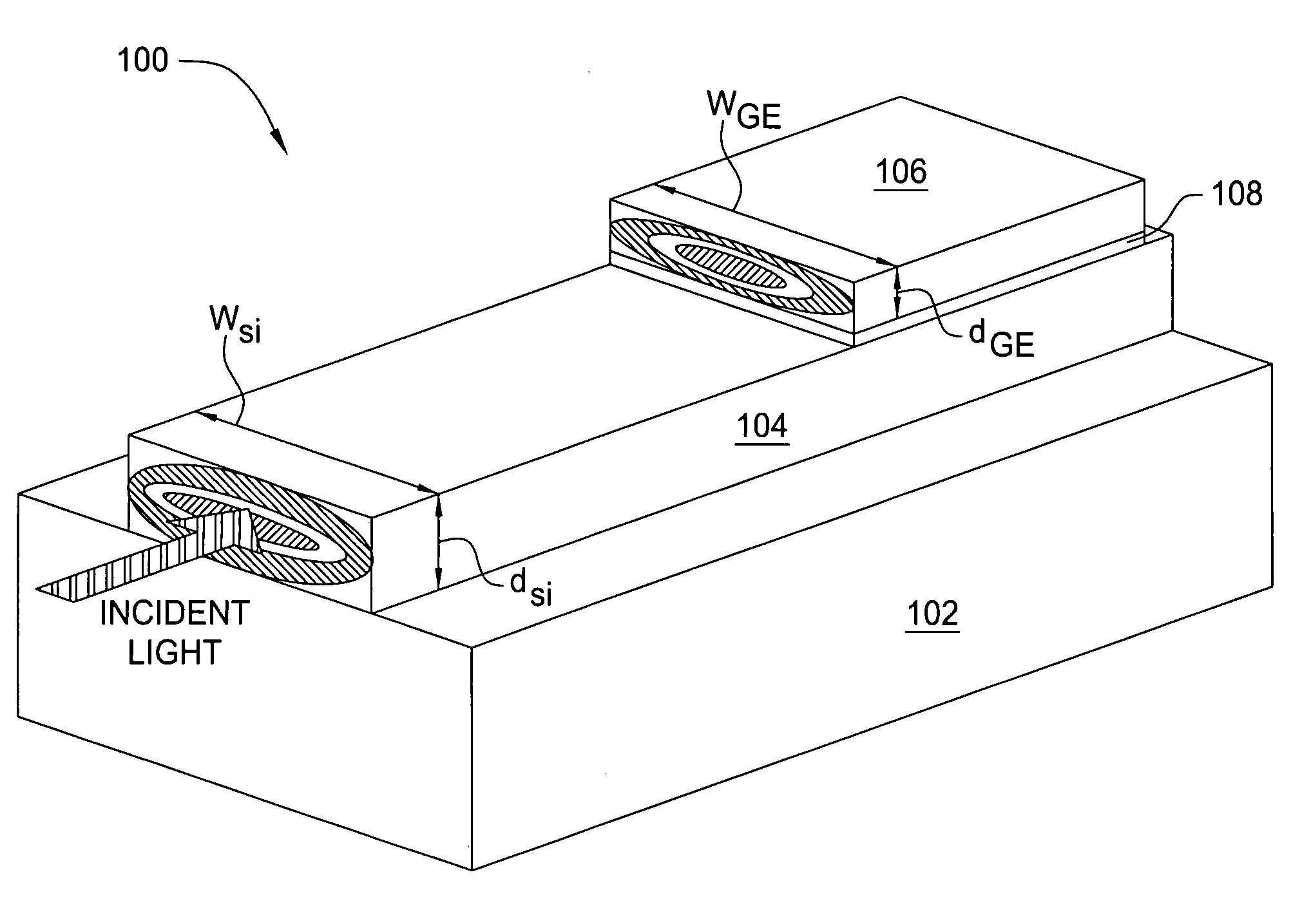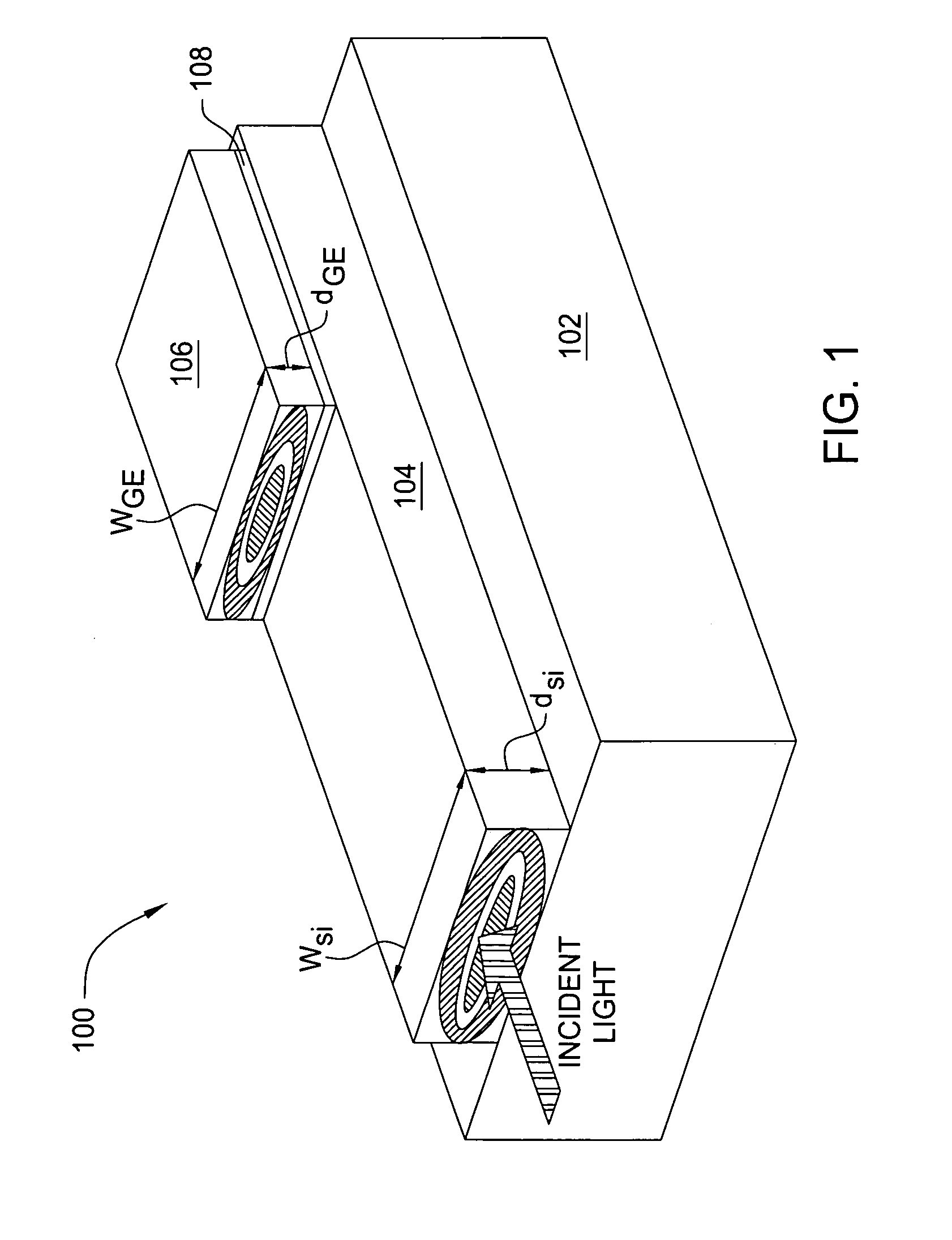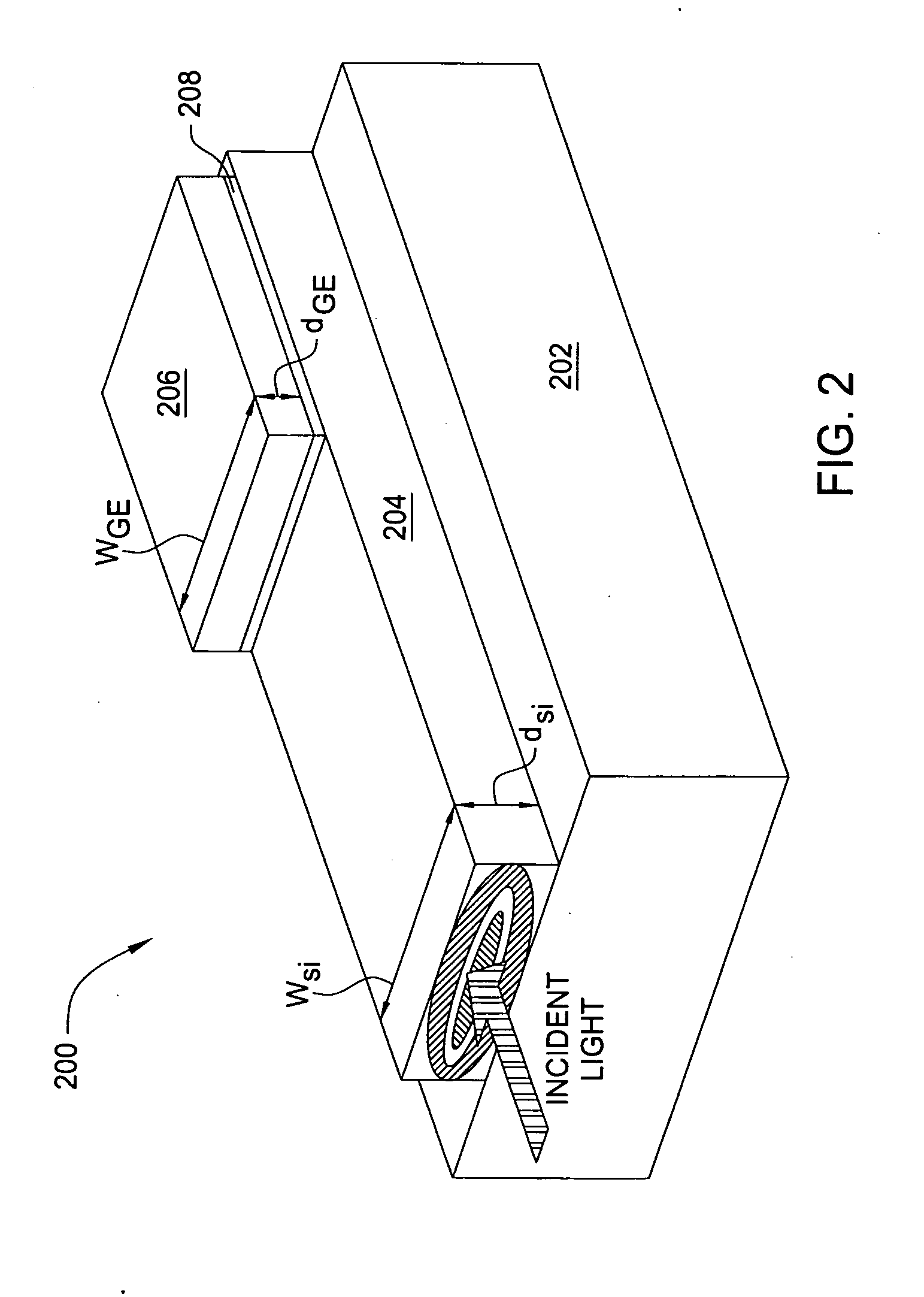Waveguide photodetector
a waveguide and photodetector technology, applied in the field of optical waveguides, can solve the problems of limiting the development of highly scalable soi interconnects to date, unable to effectively detect such applications, and limiting the operational wavelength range of light propagation
- Summary
- Abstract
- Description
- Claims
- Application Information
AI Technical Summary
Benefits of technology
Problems solved by technology
Method used
Image
Examples
second embodiment
[0020]FIG. 2 is a perspective view of a waveguide photodetector 200, according to the present invention. Specifically, the photodetector 200 is an evanescently coupled waveguide photodetector. By “evanescently coupled”, it is meant that light is transmitted from the waveguide layer to the detection layer by means of the evanescent (or decaying) waves. This is typically accomplished by placing two or more waveguides close together so that the evanescent field does not decay much in the vicinity of the other waveguide. Assuming the receiving waveguide can support mode(s) of the appropriate frequency, the evanescent field gives rise to propagating wave mode(s), thereby connecting (or coupling) the wave from one waveguide to the next. As explained in greater detail below, the photodetector 200 exploits this concept of evanescent coupling in order to couple propagating light from a waveguide layer to a detection layer.
[0021] To this end, the photodetector 200 comprises a substrate 202, a...
third embodiment
[0027]FIG. 3 is a perspective view of a waveguide photodetector 300, according to the present invention. Specifically, the photodetector 300 is a waveguide photodetector with an adiabatic taper coupler. To this end, the photodetector 300 comprises a substrate 302, a waveguide layer 304 formed on the substrate 302 and a detection layer 306 formed on the waveguide layer 304. Thus, in this embodiment, the waveguide layer 304 is effectively “sandwiched” between the substrate 302 and the detection layer 306. In alternative embodiments, however, the entire photodetector structure may be buried under a thick oxide layer, in which case there is no “sandwiching” of the waveguide layer 304.
[0028] The substrate 302 is an insulator. In one embodiment, the substrate 302 is a buried oxide substrate. The waveguide layer 304 is a single-mode strip waveguide in a wavelength of interest along its entire length. That is, the waveguide layer 304 provides, along its length, for the waveguiding of only a...
PUM
 Login to View More
Login to View More Abstract
Description
Claims
Application Information
 Login to View More
Login to View More - R&D
- Intellectual Property
- Life Sciences
- Materials
- Tech Scout
- Unparalleled Data Quality
- Higher Quality Content
- 60% Fewer Hallucinations
Browse by: Latest US Patents, China's latest patents, Technical Efficacy Thesaurus, Application Domain, Technology Topic, Popular Technical Reports.
© 2025 PatSnap. All rights reserved.Legal|Privacy policy|Modern Slavery Act Transparency Statement|Sitemap|About US| Contact US: help@patsnap.com



